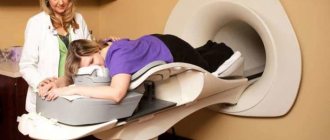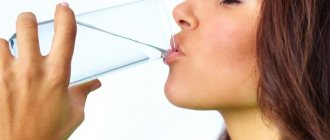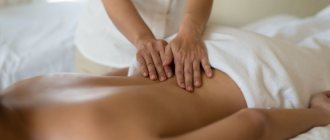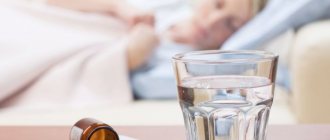What is fluorography: description of the procedure
The technique is characterized by photographing the lungs using X-rays. The image is displayed on a fluorescent screen. Parts of the human body absorb radiation unevenly, so the bones are clearly visible in the picture, while other parts of the body are invisible (lung tissue) or translucent (large vessels, heart).
The film technique is common in clinics and hospitals, but recently it has been replaced by a digital one, in which the radiation exposure to the body is reduced. The test is carried out annually to prevent disease.
A fluorograph is used to exclude or detect diseases of the pulmonary system: bronchitis, pneumonia, tuberculosis, neoplasms.
Frequent X-ray radiation results in tumor formation many years and 10 years later, but this risk is thought to be very small (comparable to natural background radiation dose [5]). Thus, according to one Oxford University study, by age 75, X-rays increased the risk of cancer by 0.6-1.8% in 13 of the 14 countries examined, and in one country (Japan) which had the highest estimated annual exposure rate in the world, this figure is just over 3% [1].
The difference between fluorography and x-rays: radiation dose
Fluorography and radiography are procedures that examine the structure of the body using x-rays. Their main difference is in detail: x-rays display the image in full size and are used as prescribed by a doctor.
Characteristics of fluorography:
- radiation dose – 0.01-2.5 mSv [2, table. 6.1],
- the image is less clear, formations as small as 6 mm are visible,
- the purpose of the study is prevention (once a year),
- used to study the lungs,
- contraindications: period before conception, pregnancy, children under 14 years of age,
- the price of the procedure is 4-5 times less than an x-ray.
X-ray characteristics:
- radiation dose – 0.01-1.6 mSv [2, table. 6.1],
- the image is clear, pathological formations as small as 2 mm are visible (this allows for timely diagnosis of the smallest cancerous formations),
- the purpose of the study is to diagnose the suspected disease,
- used for any organs and systems,
- frequency of use - as needed (for bone fractures, repeated scanning is required),
- contraindications: period of conception, pregnancy, postpartum period, menstruation (contraindications are relative, there are exceptions),
- expensive procedure.
Since the first method is cheaper, it was decided to use it for preventive purposes annually. The second can be done as prescribed by a doctor; its cost increases with several projections of the body structure being examined.
The annual radiation dose , according to SanPin 2.6.1.2523-09 clause 1.4, should not exceed: for the skin - 50 mSv, for the lens of the eye - 15 mSv [3]. At the same time, the dose of annual natural radiation is 1-10 mSv (the global average is 2.4 mSv) [4].
Types of fluorography: differences
Before undergoing the procedure, you need to find out which device is installed in the medical facility. institution. They come in two types:
- Film - a screen is used on which the image is projected. The film on which the photograph is displayed has a certain degree of sensitivity, so the radiation dose cannot be reduced.
- Digital - radiation is carried out by a fan-shaped beam. The image is displayed on the monitor. The cost of the procedure is reduced; there is no need to purchase films. The amount of radiation is reduced by 10 times, this expands the consumer group, eliminating the risk of cancer. The high throughput of digital fluorography improves image quality, bringing it closer to an x-ray image.
Radiation with the film method (for cervical vertebrae) is 0.3 mSv, with the digital method - 0.03 mSv.
If possible, you should choose the digital method. It allows mothers not to worry about the question of how much time should pass after fluorography so as not to harm the baby with breast milk.
Fluorography during breastfeeding: limitations

During the process of bearing a child, the immunity of expectant mothers does not fully function; there is a risk of contracting diseases that are hidden in nature, or cancerous formations in the chest or mammary gland. Pathology studies are carried out after childbirth. Fluorography cannot be performed during pregnancy due to potential risks [7]. Radiation affecting the fetus will cause more harm than to the mammary glands during lactation.
There is a risk of a child contracting tuberculosis through close contact with the mother. To avoid this, a chest scan is performed immediately after the baby is born. Breastfeeding mothers are allowed to undergo fluorography for the following reasons:
- the appearance of symptoms of lung disease: shortness of breath at rest, frequent cough with or without sputum, increased body temperature, chest pain during inhalation and exhalation, unnatural sounds when breathing (creaks, wheezing, whistles),
- contact with a tuberculosis patient,
- positive Mantoux test in close relatives,
- hospitalization of a nursing mother with her baby,
- exacerbation of a chronic disease of the maternal pulmonary system,
- mother and child live in unsanitary conditions.
There is no annual preventive procedure; fluorography of a nursing mother is a last resort. The examination is prescribed only by a doctor, who will determine whether the child can be fed after the examination. The sooner abnormalities are identified, the sooner treatment will be carried out.
Fluorography in the maternity hospital
Women are concerned about whether it is possible to do fluorography on a nursing mother. Nursing mothers undergo fluorography after childbirth in the first three days as prescribed by the doctor. The procedure is performed only at the request of the nursing woman. If she does not give her consent to undergo fluorography while breastfeeding, she must fill out a refusal form. Doctors do not force the mother to undergo examination without the desire of the mother, but must explain to her why women should undergo examination after childbirth.
Refusal does not affect discharge from the hospital. A woman is discharged if she and the child have no complications after childbirth or serious illnesses. However, in order to register with a children's clinic, fluorography is necessary, even when breastfeeding.
An X-ray of your chest, limbs or teeth is equivalent to several days' worth of background radiation, and the chance of cancer is less than 1 in 1,000,000 [5].
Effect of radiation on breast milk and baby
Does breast milk remain useful after fluorography, after what period of time is breastfeeding allowed? During the scan you will receive a small amount of radioactivity, some of which may pass into your breast milk. If your child drank this milk, he was also exposed to a small amount of radiation, the less the better.
How much radiation will my child receive? If you follow the specific advice given by the Department of Nuclear Medicine for the test [7], your child will only receive a tiny dose of radiation. However, even if you didn't follow this advice, your baby will only receive a radiation dose that is less than the natural background radiation we receive every six months.
When can you feed your baby after the procedure?
Why should you stop breastfeeding for a few hours? This is to ensure that the level of radioactivity your baby gets from the milk is very low. This is done in two ways:
- Wait a while: the amount of radioactivity in your milk will decrease over time.
- By expressing milk, you will get rid of radioactivity. [8]
Are lactation and x-ray examination compatible?
In recent years, a lot of scientific research has been carried out to determine how radiation affects mother's milk. It has been established that the quality of milk produced does not change after the procedure, so X-rays and breastfeeding are quite compatible and there are no prerequisites for refusing feeding. The mother can continue breastfeeding even after the test. For example, X-rays of the stomach using barium are considered safe. This substance does not settle in the female body, is not absorbed and does not have a negative effect on the quality and production of milk.
It is only necessary to wait a certain period of time after an x-ray if an examination of internal organs is being carried out. Since for this procedure other contrast agents are used, which help to see the picture of what is happening more clearly.
However, breastfeeding is not a contraindication for x-rays. This is rather a precautionary measure, which is reported by the manufacturers of X-ray machines, in order to in no case allow negative consequences of the procedure for both mother and baby.
Such a study is prescribed to identify the following pathologies:
Do I need to pump before fluorography?
Almost all women who breastfeed ask their health care workers whether there is a need to pump? Experts say that irradiation stops immediately after leaving the fluorography booth, and there is no residual amount of rays in the milk. You can express before the procedure if the baby is fed and the remaining milk will not be needed in the next couple of hours.
We recommend reading: Is it possible to eat rice with gastritis: is it possible to eat it, the effect on the gastrointestinal tract
After diagnosis, many mothers prefer to dispose of expressed milk so that it does not harm the baby. If a woman is worried about this, doctors do not prohibit expressing milk once, but they do not advise taking the baby away from feeding for 2-3 days. This can affect lactation and teach the baby to suck the pacifier, which will put feeding at risk.
Preparing nursing mothers for examination

There are no recommendations for breastfeeding mothers on how to take measures to protect the mammary glands. The doctors conducting the study answered the question: “Do I need to pump before the procedure?” - they answer negatively. The amount of radiation is so small that it will not cause negative effects in a woman’s body. If a woman is concerned about the condition of her milk after the examination, she can consult with a mammologist or therapist and find out whether fluorography can be done while breastfeeding.
Rules to help avoid excessive exposure to radiation:
- conducting examinations in extreme cases,
- examination that does not require urgency should be carried out after completion of breastfeeding,
- feed the child immediately before the examination and 3 hours after it,
- use of a protective apron during the procedure,
- choice of x-ray equipment before fluorography for hepatitis B: choose the one that uses less radiation.
The results of the examination are not affected by food consumption, exercise, smoking, or taking medications. The accuracy of the results is affected by:
- jewelry of any size and material, located below the collarbones,
- un-removed bra,
- hair below the collarbones.
When conducting the examination, you must follow the doctor's instructions: press your chest to the screen, do not move, do not breathe. If the conditions are not met, the image will be unclear.
Is it possible to do fluorography on a nursing mother and when can she feed her baby?
Recently, more and more women are choosing breastfeeding as the only correct nutrition option for a newborn. Refusal of formulas and bottles inevitably leads to some restrictions that the mother of a small child has to experience. This is not only about changing your usual diet and the need to follow a diet. In the first days after childbirth, a woman is faced with difficult choices. Whether or not to take certain medications, will they harm her baby? When can I return to sports without harm to my health? Is it possible to undergo fluorography of a nursing mother?
The answer to the last question worries every woman whose birth took place in a specialized maternity hospital. On the very first day after the baby is born, the postpartum mother is sent for fluorography. Is it really safe for a newborn, and is this research really necessary?









